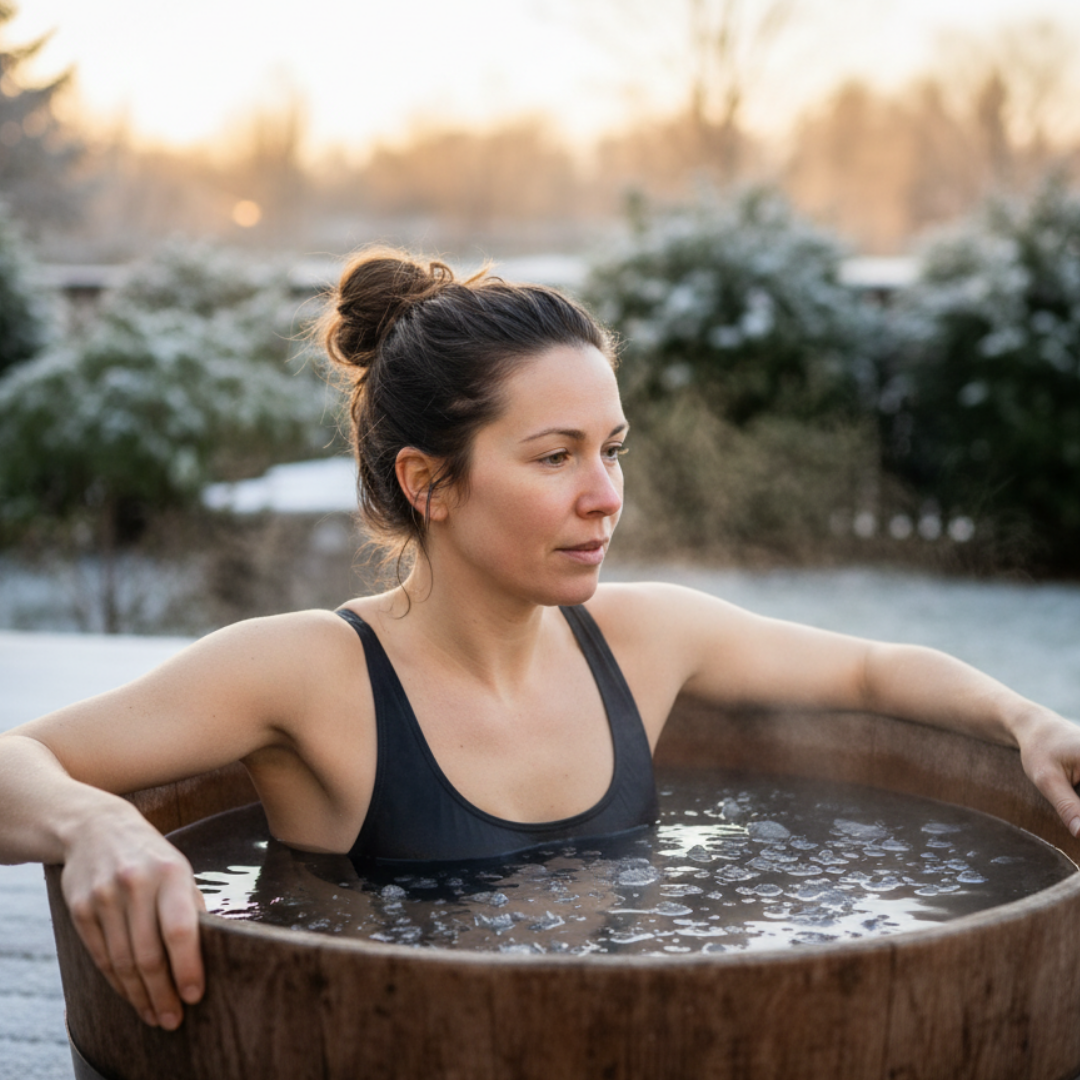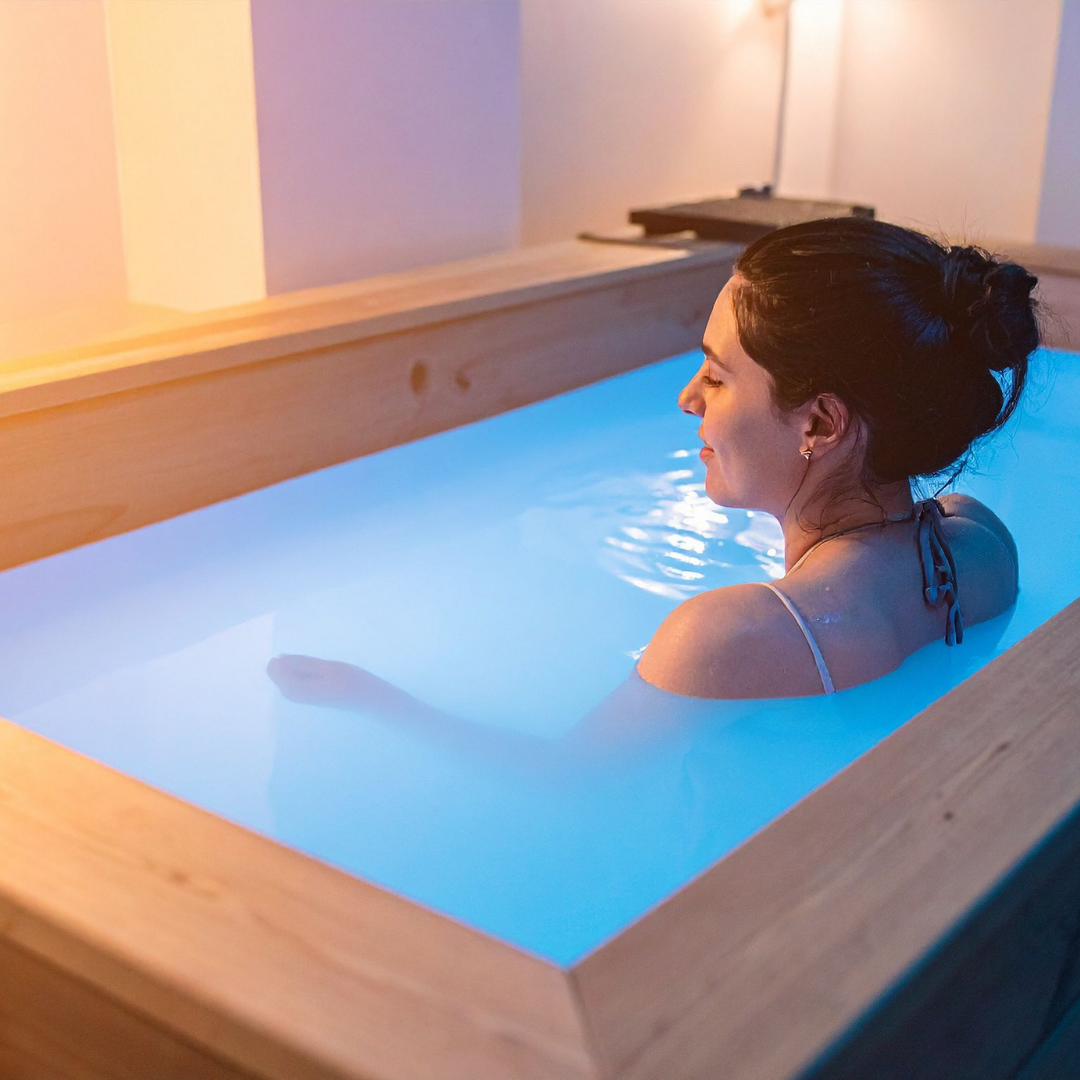As a mom, your wellness practices don’t just affect you — they ripple into how much energy you have, how you recover, and how you show up for your kiddos. Cold plunging has been getting buzz for benefits like recovery, mood, resilience, and more. But before you dive in, there are things especially for us mamas to consider.

What Moms Should Know Before You Take the Cold Plunge
Why Moms Might Be Especially Sensitive to Cold Plunges
First, let’s talk physiology. Cold plunges (typically immersing your body in water at or below ~59 °F / ~15 °C) trigger a “cold shock” response. Your breathing rate may spike, adrenaline floods, blood pressure can rise, and your body constricts vessels in your limbs to preserve core heat.
Women tend to experience a few differences compared to men when doing cold plunges, which makes it worth being considerate:
- More insulation, more sensation of cold. Women on average carry more body fat and less muscle mass. While that fat gives some insulation, it also means the skin may feel colder, especially in limbs, and that heat loss patterns differ.
- Cycle and hormonal shifts. The fluctuations in baseline body temperature across your menstrual cycle (or perimenopause/menopause) can influence how cold feels, how you shiver, and how quickly you recover from exposure.
- Stress hormone response. Cold plunging causes transient spikes in cortisol and other “fight-or-flight” hormones. While acute stress responses can be beneficial (“hormesis”), the timing matters — especially for a body already juggling sleep deprivation, parenting stress, and hormonal shifts.
- Cardiovascular load. Because plunges provoke a sympathetic response, your heart works harder temporarily. If you have a history of hypertension, heart issues, or you’re postpartum (especially early postpartum), this needs extra caution.
The bottom line? Cold plunging is not inherently “bad” for women, but it’s not risk-free either — particularly in the context of motherhood, when your body is already doing so much.

How to Make Cold Plunging Mom-Friendly and Safe
Here’s how to approach it if you’re curious and want to do it wisely:
1. Check in with your health first
If you’re pregnant, recently postpartum, have cardiovascular conditions, or are dealing with hormonal imbalances — talk with your OB, midwife, or doctor before plunging. Cold shock recruits your stress response and exerts strain.
2. Start slow and be gentle with your system
- Begin with higher water temps (e.g. ~ 55 °F) before going colder.
- Keep immersion times short initially (e.g. 30 seconds to 1 minute).
- Gradually extend duration as you see how your body responds.
- Don’t plop in cold right after a big stressor (like a sleepless night or a sick child) — give your system a buffer.
3. Take your cycle or hormonal state into account
On days when you feel colder, more fatigued, or hormonally “sensitive,” consider skipping or dialing back your plunge. Your internal thermostat changes across your cycle — respect that.
4. Listen to your body (don’t override warning signs)
If you feel dizzy, numb, shivery, or your breathing is erratic, get out. Don’t push through discomfort that feels unsafe. Cold plunging should build resilience, not cause strain you’ll pay for later.
5. Pair with recovery and self-care
Cold plunging is just one tool. You’ll get more benefit (and less harm) when you pair it with quality sleep, stress management, good nutrition, and active recovery (gentle movement, stretching, breathwork).
6. Make it manageable for your mom life
- Do it at home (cold tub, cold tap, outdoor plunge) so you’re not driving far.
- Use it as a micro-break: 1–2 minutes of plunge can feel like “you time.”
- Include your partner or a friend (safety + accountability).
- Align it with your wellness goals (e.g. recovery after a workout, mood reset) rather than making it a must-do every day.
Is Cold Plunging “Worth It” for Busy Moms?
We don’t have definitive science yet. Some small studies hint at benefits like improved mood, better stress resilience, and faster recovery from muscle soreness. On the flip side, cold plunges can provoke sharp stress responses, especially early on or when overdone.
In the world of motherhood, your “return on investment” matters. If plunging gives you a mental reset, helps with recovery, and feels empowering — great. But if it leaves you more tired, stressed, or feeling like you “have to” do it — it might not be the right tool at this season.

Final Thoughts, Mom to Mom
- You don’t have to do a cold plunge to “level up” your wellness.
- If you do try it, do so with respect for your body, your cycle, and your stage of motherhood.
- Let it be a choice, not a demand.
- Watch your reactions over time — how you sleep, your mood, how your body feels.
- And remember: your self-care doesn’t need to be extreme — it just needs to be sustainable.
